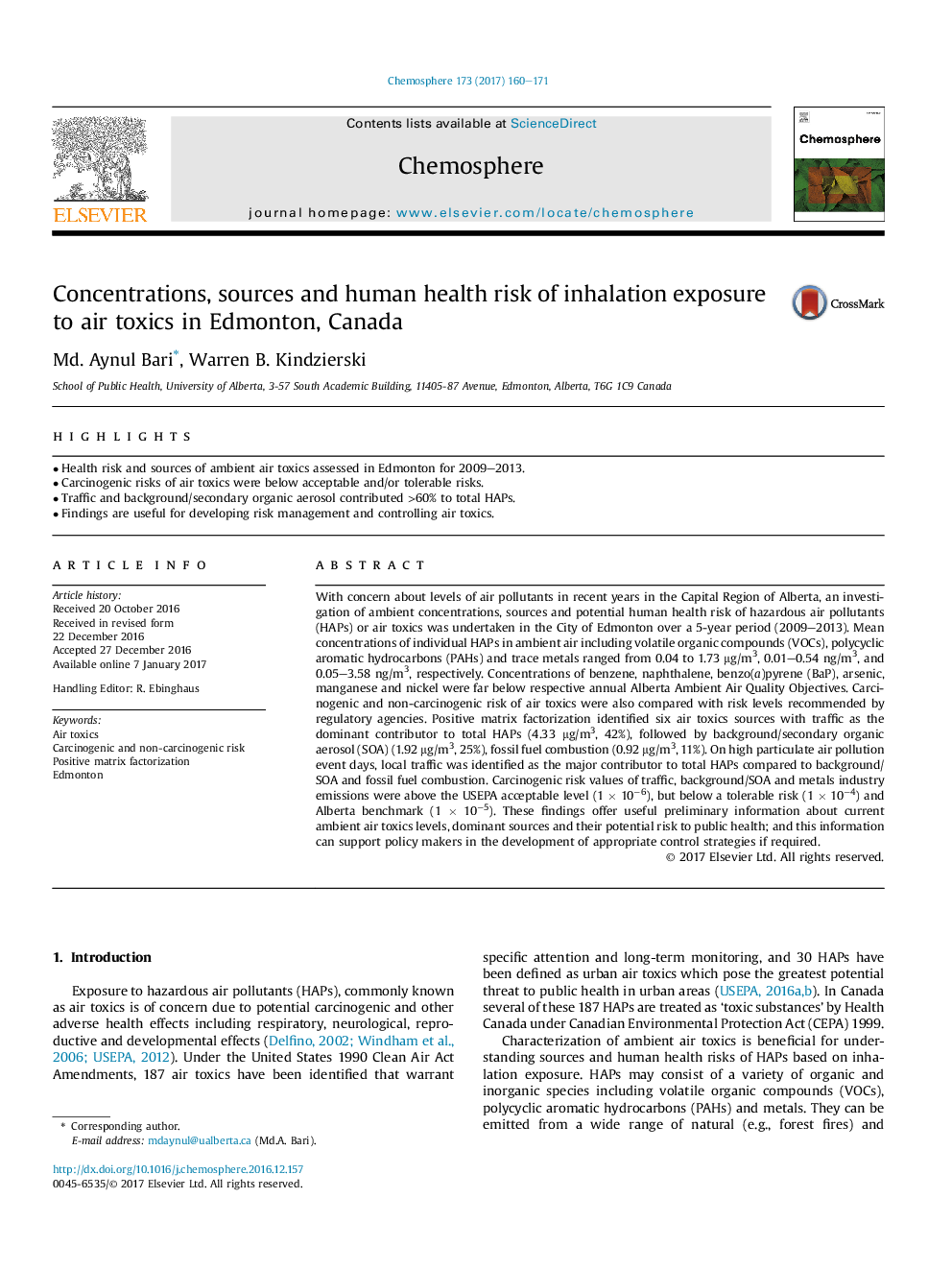| Article ID | Journal | Published Year | Pages | File Type |
|---|---|---|---|---|
| 5747377 | Chemosphere | 2017 | 12 Pages |
â¢Health risk and sources of ambient air toxics assessed in Edmonton for 2009-2013.â¢Carcinogenic risks of air toxics were below acceptable and/or tolerable risks.â¢Traffic and background/secondary organic aerosol contributed >60% to total HAPs.â¢Findings are useful for developing risk management and controlling air toxics.
With concern about levels of air pollutants in recent years in the Capital Region of Alberta, an investigation of ambient concentrations, sources and potential human health risk of hazardous air pollutants (HAPs) or air toxics was undertaken in the City of Edmonton over a 5-year period (2009-2013). Mean concentrations of individual HAPs in ambient air including volatile organic compounds (VOCs), polycyclic aromatic hydrocarbons (PAHs) and trace metals ranged from 0.04 to 1.73 μg/m3, 0.01-0.54 ng/m3, and 0.05-3.58 ng/m3, respectively. Concentrations of benzene, naphthalene, benzo(a)pyrene (BaP), arsenic, manganese and nickel were far below respective annual Alberta Ambient Air Quality Objectives. Carcinogenic and non-carcinogenic risk of air toxics were also compared with risk levels recommended by regulatory agencies. Positive matrix factorization identified six air toxics sources with traffic as the dominant contributor to total HAPs (4.33 μg/m3, 42%), followed by background/secondary organic aerosol (SOA) (1.92 μg/m3, 25%), fossil fuel combustion (0.92 μg/m3, 11%). On high particulate air pollution event days, local traffic was identified as the major contributor to total HAPs compared to background/SOA and fossil fuel combustion. Carcinogenic risk values of traffic, background/SOA and metals industry emissions were above the USEPA acceptable level (1 Ã 10â6), but below a tolerable risk (1 Ã 10â4) and Alberta benchmark (1 Ã 10â5). These findings offer useful preliminary information about current ambient air toxics levels, dominant sources and their potential risk to public health; and this information can support policy makers in the development of appropriate control strategies if required.
